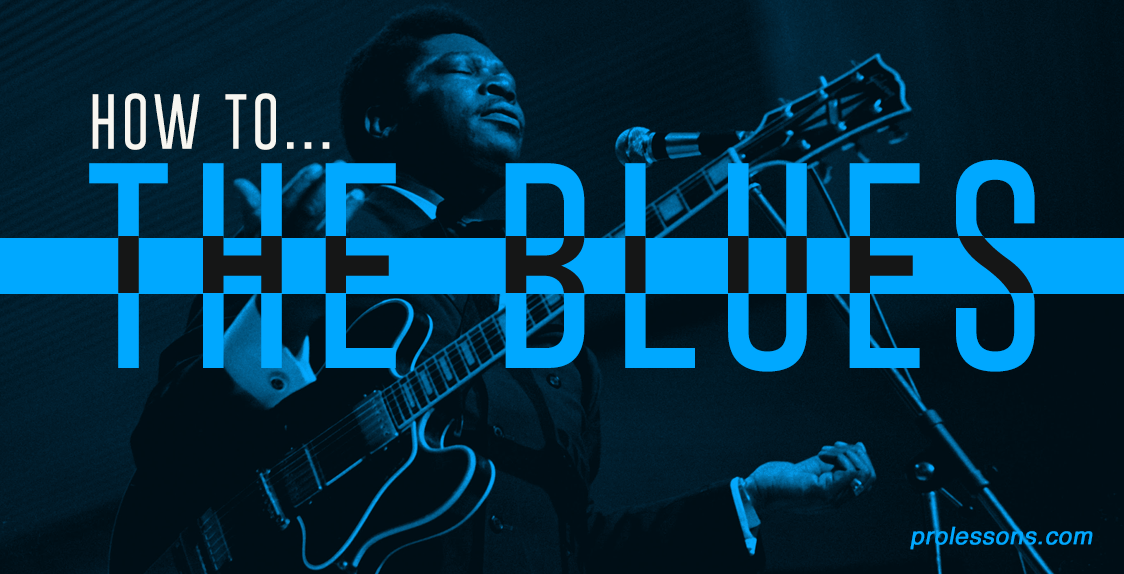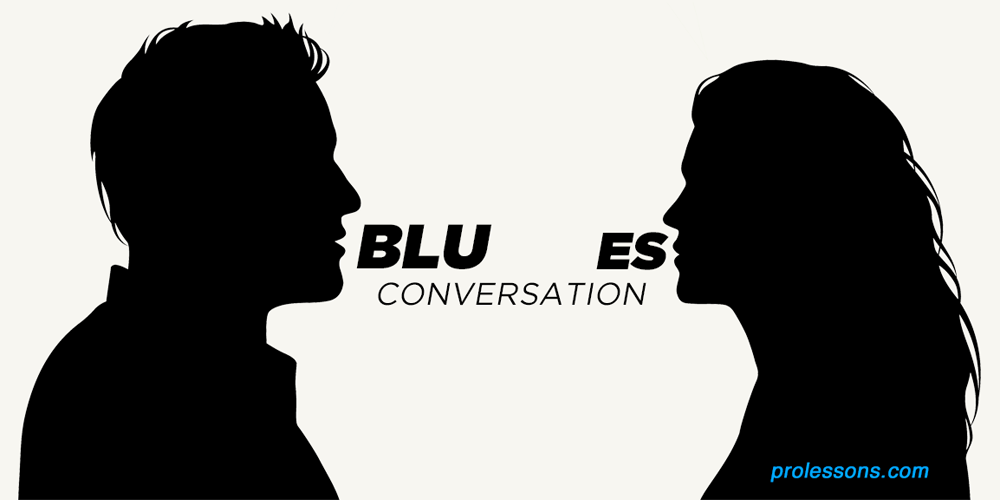FREE LESSON
PHIL KEAGGY - Grammy nominated and seven-time Dove Award winner, is one of the world’s great guitar players and a pioneer in contemporary Christian music.

How to play blues guitar is a subject challenging to write about thoroughly-mainly because “The Blues” is felt and how much harder to read it off a page. I mean, if you can’t feel it when it’s played from a music manuscript, how in the world can you “hear it, or feel it” from the words of a written article? But, let’s give it a go. Blues is not so much a style, as it is an experience. That’s why old recordings of greats like Robert Johnson, Blind Willie Johnson, Howlin’ Wolf, Muddy Waters and many others are not pretty and in tune, or in standard rhythm. They played what they felt and there was no one to tell them it wasn't correct and thank God, right! There’s something about the way those guys thumbed the strings of the guitar and slapped it around, and beat the blues out of it. It’s like their spirit manifested through a box with wires to give us a glimpse of their pain-a transport of something from another world. Mostly, it was their woes and heart breaks over poverty, and the loss of a mighty wonderful woman. Booze and reckless living was also a big part of their influence.They seem to “bubble up in the swamp” if you will, for just a brief moment and give us something from deep down beneath. Others have tried to replicate it and we’ve all borrowed from them but the Blues can't really be played; it has to be felt.
I’m pretty sure none of us have worked all day on the railroad, or picked cotton from daylight to dark in the hot Mississippi sun. Callused and bleeding hands sound different than smooth and spoiled hands. Rough finger nails on a mangled fretboard squeak and squawk as the hand makes the sound the soul is feeling. Made up chords and unconventional intervals offer up a dark and muddy array of tones and groans. The hand shakes to give the note a voice, but who can measure the physics and geometry of it? The hack of the strumming hand against the top of the guitar or the thumping of the thumbnail on an out of tune E String, the crude rakes and un-chartable rhythms that seem to just flow effortlessly, and the tone itself impossible to reproduce perfectly. Each Bluesman seems to have his own voice on the instrument. His hands seem to own something he’s purchased at a dear price. Focus on your pain and loss, and let your fingers do the weeping; or rather, look at it like a way to get healed as you offer up your soul to the one who gave such expression to you in the first place… a lighter side of the blues you might say.
In many ways, it’s very simple, the technique, really. But, it’s almost impossible to replicate. The way BB King bent notes and used reckless vibrato, or the movement of bottle neck slide on steel strings, who can match it perfectly? Most of us modern guitarists bend to perfect intervals of 1/4’s, 1/2’s, whole notes, or step and 1/2 bends. We’ve homogenized the craft and lost the perfect imperfection perhaps. Still, ever once in a while we let go and leave the chart or forget what we know and stumble into that soulful place where we abandon our scales, our perfect timing, our good intonation, and then something very odd and musical happens for a brief moment that people can feel. When they feel it, we get our greatest compliments even though that wasn't even the goal; and the truth is, it wasn't even meant for them. It was a heart cry, a desperate plea, even a outburst of anger or loathing misery. I don’t want to demonize it either. David in the Bible played before King Saul and it drove away evil spirits that tormented Saul. Again, who was the greatest beneficiary of David’s playing? King Saul or David himself? Remember, David had won Saul’s oldest daughter for killing Goliath, the Philistine, and she was taken and given to another man. Wanna talk about the blues? Maybe David was playing some Blind Willie Johnson when Saul threw that javelin at him.The good news is he ended up with the youngest and perhaps more beautiful of the 2 daughters, and she loved him… Now that’s redemption. Play what you feel!

There are at least 4 voices engaging in the conversation of the a Bluesman’s song. 1. The strumming hand, 2. The chording hand or slide, 3. The Blues players feet, and 4. The players voice with which he or she is singing. Usually, there’s a cool riff that starts the groove. Almost always, it involves a flatted 7, and usually involves a flatted 5th. But remember, they probably didn’t even know what we’re talking about here. It was just a lonely sound to them. Suddenly, in the old recordings, you’d hear the patter of ragged boots on a hardwood floor. The stomping was just another part of the conversation. Then, odd movements from open voiced chords or even standard tuned chords with choked strings join in the dialog. Lastly, the Bluesman begins to moan out a haunting melody against the bidding of his hands and feet with a scruffy, sometimes almost impossible to make out lyric. He conjures up a lyric and then his hands argue back with protest, or maybe they shout “Amen.” All the while, the feet and slap of the strumming hand are throwing in punches too. It’s a heated conversation, a battle between the soul and the mind. He loves her, but she’s a no good, low down, dirty rotten, poor excuse of a lover. His hands and feet are there to either console him or beat some sense into him. “If you love her, make it right”, they argue. We all love the sound, but we may have to pay the dear price before we can own a piece of it.
Finally, when you’ve played for a while, you start developing signature licks or riffs that seem to mark you, as a player. The legends all had the mark. BB’s signature vibrato, Steve Ray’s effortless pentatonic bending, hammering on and pulling off, Hendrix’s tone and endless soulful vocabulary, and on and on it goes. It’s like the wear on the back of your guitar neck, or the wood missing from beneath the sound hole. It’s your guitar. It’s your mark. It’s your sound. Nobody can do it quite like you. It’s the way you bend the string, it’s the amount of vibrato you use. It’s the way you touch the fretboard. It’s the way you strike the strings. Your tone is part of your mark. Find your voice, and say what you’re feeling. “Take your time son” as my good friend and great Rhythm and Blues guitarists Will McFarlane says. You can’t be in a hurry. It has to feel right. So, you are what you eat, right? Go download a few classic songs from the top Blues guitarist. For the 30 greatest blues guitarist of all times Click Here. If you really want to learn how to play blues guitar, go back to the old greats and move forward to the more recent greats. Listen to it for a while. Get the sound in your head. Learn the Blues Scale and Minor Pentatonic Scale in all 5 positions on your guitar neck. Pick up a few already tabbed out songs and memorize them. Then, it’s really up to you as too how deep you can reach and how soulful and bluesy you can begin to play. Enjoy yourself! Go deep.
At Pro Lessons we have many instructors that specialize in Blues Guitar - from Will McFarlane, Tony Hooper, and Tom Lane. Feel free to check out all our professional instructors Here. Should you be ready to see first hand all styles we offer at Pro Lessons click the link below and let's get rolling.